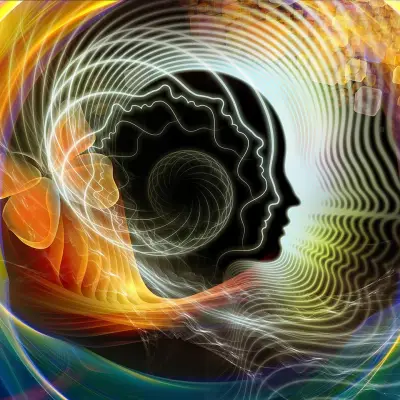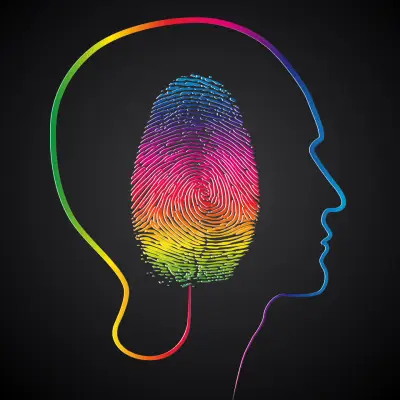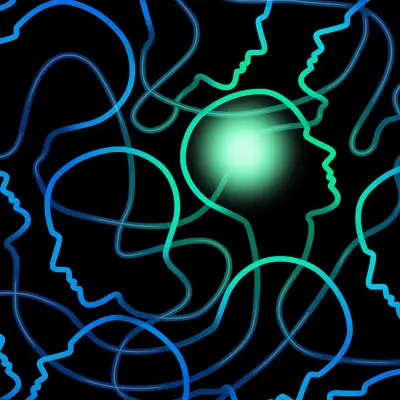Have you ever found yourself in a situation where your actions and beliefs don’t seem to align? Maybe you knew smoking was bad for your health, but continued to smoke anyway. Or perhaps you felt guilty about not recycling, even though you didn’t take the time to do so. If you’ve experienced these feelings of discomfort, you may have encountered a psychological concept known as cognitive dissonance.
In this blog post, we explore what cognitive dissonance theory is, how it works, and why it’s so important in understanding human behaviour.
Jump to:
- What is Cognitive Dissonance?
- Cognitive Dissonance Theory in Psychology: Festinger's Work
- 7 Signs of Cognitive Dissonance
- Examples of Cognitive Dissonance in Real Life
- How Do People Reduce Cognitive Dissonance?
- The Role of Cognitive Dissonance in Marketing
- Cognitive Dissonance in Relationships
- Frequently Asked Questions
- Study Our Psychology Diploma for £29
Recommended for you!
Best SellersWhat is Cognitive Dissonance?
Cognitive dissonance refers to the mental discomfort or tension that arises when a person holds two or more conflicting beliefs at the same time. This theory, first introduced by psychologist Leon Festinger in 1957, suggests that when we experience inconsistency in our thoughts and actions, our mind will naturally try to resolve the conflict in order to reduce the discomfort.
In simple terms, cognitive dissonance is the mental itch we feel when we realise our actions don’t align with what we believe. Think of it as a clash in your brain; your beliefs and actions are at odds, and your mind wants to restore harmony.
For example, imagine you consider yourself a healthy eater, but one evening, you enjoy a large chocolate cake. The guilt you feel after eating that cake is a result of the dissonance between your self-perception as a health-conscious person and the action of indulging in unhealthy food.
Cognitive Dissonance Theory in Psychology: Festinger's Work

Leon Festinger, the psychologist behind cognitive dissonance theory, conducted experiments that highlighted how people deal with dissonance in various situations.
One of his most famous studies was the $1/$20 experiment, where participants were asked to perform a boring task and then convince others that the task was enjoyable. The participants who were paid $1 to do this task reported enjoying it more than those who were paid $20. Why? The $1 group had more cognitive dissonance because they had to justify their behaviour with a minimal incentive. In contrast, the $20 group had a clear reason for their actions (the larger payment), so their dissonance was lower.
Festinger’s work showed that when people cannot find an external justification for their actions, they will often change their beliefs to reduce dissonance. In this case, the $1 group was more likely to change their perception of the task to make it seem more enjoyable.
7 Signs of Cognitive Dissonance

Cognitive dissonance can be tricky to spot because it often manifests as a feeling of discomfort or tension rather than a specific, obvious sign. However, here are seven signs that you may be experiencing cognitive dissonance:
- Feeling discomfort or unease when your thoughts and actions are out of alignment.
- Rationalising conflicting behaviour to justify actions that contradict your beliefs or values.
- Changing your beliefs to match your actions to reduce discomfort.
- Engaging in denial by ignoring or avoiding situations that highlight the inconsistency.
- Avoiding information that contradicts your current views or behaviour.
- Overthinking a specific decision or action to find a way to justify it.
- Shifting blame by pointing to external factors as reasons for your behaviour, instead of accepting responsibility.
Examples of Cognitive Dissonance in Real Life

Cognitive dissonance isn’t just a theoretical concept; it’s something that affects us all in everyday situations. Here are a few common examples:
Buying Expensive Products
Many people experience cognitive dissonance after making a significant purchase, particularly if the item was expensive. For example, after purchasing a luxury car, a person might feel uncomfortable about the high cost. To reduce this dissonance, they may justify their purchase by focusing on the car's quality, safety features, and the status it brings. Alternatively, they might convince themselves that they "deserve" such a purchase because they work hard, thus reducing the discomfort from the hefty price tag.
Support for a Politician or Celebrity
When someone supports a politician or public figure, they often encounter cognitive dissonance when that person does something controversial or behaves in a way that contradicts their previous image. For example, if a celebrity known for being environmentally conscious is seen using excessive plastic or wasting resources, their fans might experience cognitive dissonance. To reduce this tension, they may rationalise the celebrity’s behaviour by saying things like, "They’re just human, and everyone makes mistakes" or "Maybe they were pressured into it."
Cheating in a Relationship
Infidelity is another situation that often leads to cognitive dissonance. A person who values honesty and loyalty might feel uncomfortable about cheating on their partner. To reduce the dissonance, they might justify the action by blaming their partner for not being attentive enough, or they might convince themselves that their feelings for the person they cheated with are more genuine.
Justifying Procrastination
Many people experience cognitive dissonance when they procrastinate on important tasks. You might know that it’s important to study for an exam or complete a work project, but you put it off and focus on less important activities instead. To ease the discomfort, you may tell yourself things like, “I work better under pressure” or “I still have plenty of time,” even though you know these rationalisations are only temporary fixes for the underlying dissonance.
How Do People Reduce Cognitive Dissonance?

There are several strategies people use to reduce cognitive dissonance. These strategies are often subconscious and help ease the discomfort that comes with conflicting thoughts and actions. Here are common ways to resolve dissonance:
- Changing Beliefs: If your beliefs don’t match your actions, you might change your beliefs to make the situation more comfortable. For instance, if you realise your unhealthy eating habits contradict your health beliefs, you may start believing that "everyone deserves a treat now and then" or "it’s not that bad to indulge occasionally."
- Changing Behaviour: If you realise your behaviour is inconsistent with your values, you may try to change your actions. For example, after feeling guilty about not recycling, you might begin to recycle more regularly in the future to align your actions with your environmental beliefs.
- Justification: Another common way to reduce dissonance is by rationalising your actions. In the case of smoking, someone might justify their behaviour by telling themselves that smoking helps them relieve stress, thus minimising the discomfort caused by the belief that smoking is bad for health.
The Role of Cognitive Dissonance in Marketing
Cognitive dissonance theory is widely used in marketing, as businesses understand that consumers often face dissonance when making purchase decisions. For instance, if a consumer is unsure whether to buy a product or service, marketers might use techniques to reduce the dissonance.
For example, they may offer a money-back guarantee to reassure customers that they can reverse their decision if they feel dissatisfied. This strategy reduces the discomfort that comes from uncertainty and helps consumers feel more confident in their purchase.
Cognitive Dissonance in Relationships
Cognitive dissonance can also play a role in relationships. If someone behaves in a way that goes against their partner’s values, it can create tension. To reduce dissonance, people may change their behaviours, justify their actions, or even convince themselves that their partner's values aren’t that important.
For example, if one partner in a relationship is constantly late, the other might feel upset (cognitive dissonance between expectations and behaviour). They could resolve this dissonance by changing their expectations or accepting the behaviour as "just the way they are."
Recommended for you!
Best SellersFrequently Asked Questions
How does cognitive dissonance affect decision-making?
Cognitive dissonance can heavily influence decision-making, often leading to irrational and suboptimal choices. For example, after making a choice, a person may find reasons to justify their decision to avoid second-guessing or feeling regret. In some cases, people may even convince themselves that they were right all along, disregarding any evidence that contradicts their decision. This is known as the "post-decision dissonance reduction," where the discomfort from the choice made is eased by rationalisation.
How do narcissists cause cognitive dissonance in others?
Narcissists often create cognitive dissonance in others through their behaviour, particularly when they engage in manipulative or self-serving actions that contradict their self-image. For example, they might exhibit traits of kindness or empathy in public but act in selfish or dismissive ways behind closed doors. This inconsistency can confuse those around them and create dissonance. The person who admires the narcissist may struggle with the discrepancy between their idealised view of the narcissist and the reality of their actions. To resolve this, the person may rationalise the narcissist's behaviour, excusing it to maintain their positive image of them.
What happens if you ignore cognitive dissonance?
Ignoring cognitive dissonance may lead to a long-term build-up of psychological stress. If the discomfort caused by conflicting thoughts and behaviours is not addressed, it can contribute to feelings of anxiety and internal conflict. In some cases, unresolved dissonance can even affect mental well-being, as the mind struggles to reconcile inconsistent beliefs or actions. In the long run, failing to confront dissonance may result in more extreme behaviours or attitudes to justify the inconsistency. It could also make it harder to make sound decisions, as cognitive dissonance may distort how we view information or situations.
What is the opposite of cognitive dissonance?
The opposite of cognitive dissonance is cognitive consonance, which occurs when a person's beliefs, attitudes, and behaviours are in harmony with each other. In a state of cognitive consonance, there is no conflict between what a person believes and how they act, leading to a sense of psychological comfort and alignment.
Can cognitive dissonance be used in therapy?
Cognitive dissonance can be a useful tool in therapy, especially in cognitive-behavioural therapy (CBT). By helping clients identify and confront cognitive dissonance, therapists can encourage them to examine their beliefs and behaviours. For instance, clients might be asked to challenge irrational thoughts or behaviours that cause discomfort and work towards more aligned, healthier patterns of thinking and acting.
Study Our Psychology Diploma for £29
If you’re interested in diving deeper into psychology, consider studying our Psychology Diploma Course at Centre of Excellence. This course is perfect for anyone looking to broaden their knowledge and understanding of human behaviour. Plus, you can enrol today for just £29!












